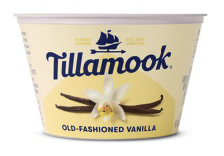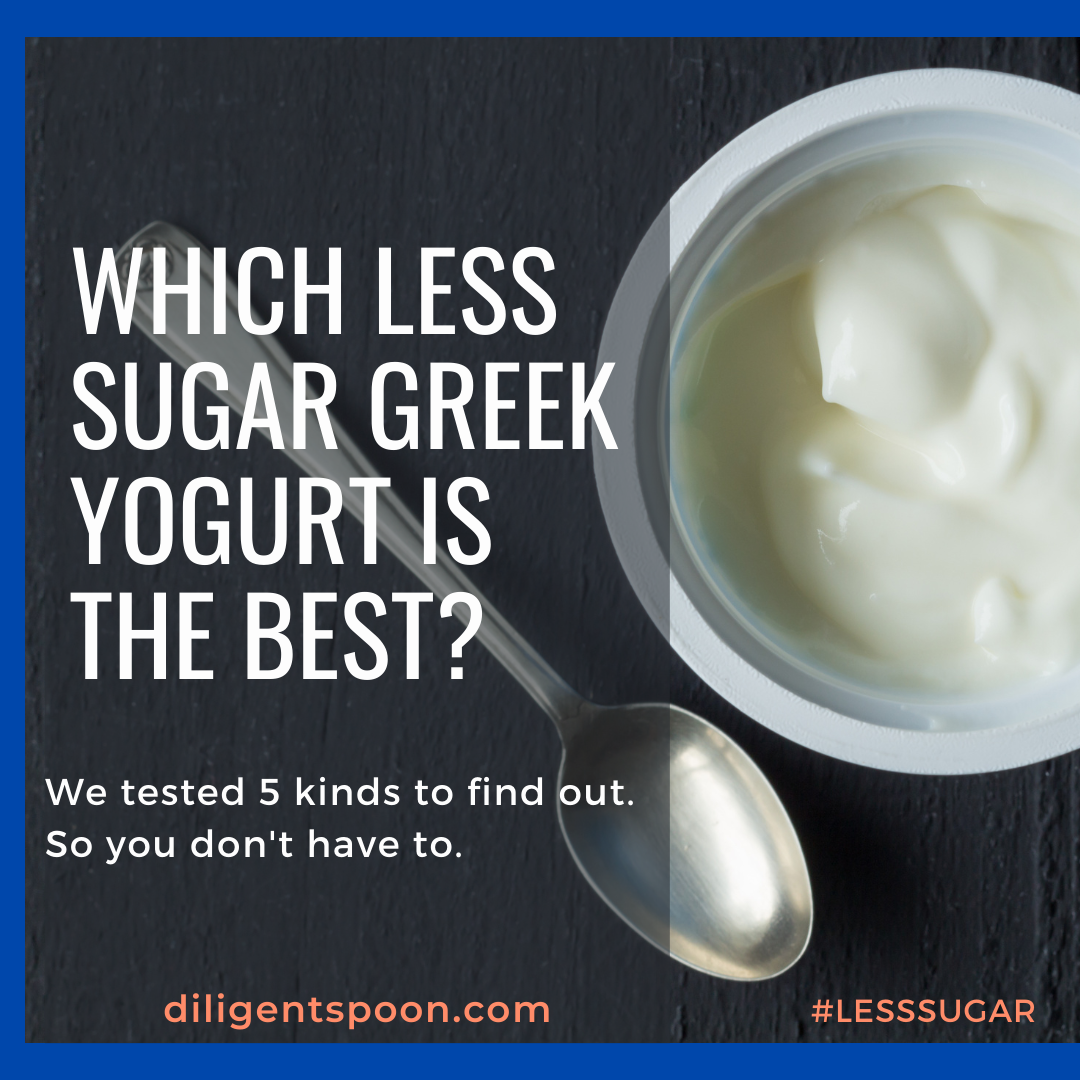
Which Less Sugar Greek Yogurt is the Best
Have you been down the yogurt aisle in your local grocery store lately? Yes, I said “yogurt aisle” because there are so many different kinds of yogurt that it takes a whole aisle to display them all. Less sugar Greek yogurt is one of the newest iterations that I’ve seen. I really wanted to know which less sugar Greek yogurt is the best (tasting), so my kids and I set out to taste-test a handful.
What Does “Less Sugar” Actually Mean?
The terms “reduced sugar,” “reduced in sugar,” “sugar reduced,” “less sugar,” “lower sugar” or “lower in sugar” are interchangeable.
They all mean that the food contains at least 25 percent less sugar per serving than the original version.
In addition, the product label must:
- Say what the reference food is, for example, “these corn flakes contain 25 percent less sugar than our sugar coated corn flakes”
- Give (quantitative) information comparing the level of the sugar in the product per serving with that of the reference food that it replaces (eg, “Sugar content has been lowered from 8 grams to 6 grams per serving.”)
In our yogurt example, the Chobani Less Sugar Greek Yogurt label advertises “45% less sugar than other yogurts”. The label doesn’t say which other yogurts. According to Chobani, other Greek yogurts have 17 grams (g) of total sugar, compared to its 9 g. Again, this is all required to be on the label.
Note that every yogurt will have some naturally-occurring carbohydrate, even if no sugar is added. So, if you find a carb-free dairy yogurt, be very suspicious.
Less sugar yogurts, especially from well-established brands like Chobani, are becoming increasingly popular. Health-conscious yogurt consumers want to reduce their sugar intake, and these products give the customers what they want.
Which Lower Sugar Greek Yogurts Are The Best?
I’m immediately suspicious when I see something labeled as “less” because it implies a couple of things:
- I’m being ripped off! I’m paying the same (or more) for “less” of something. Grrrr.
- What’s the filler? If there is “less” of something, what filled the void? In other words, is there also less product in the container? If not, what ingredients are making up for the “less-ness”?
As a yogurt super-consumer (I’m polishing off about 3 quarts a week – that’s about 12 single-serving cups) and nutritionist, I’m all too happy to take a closer look at the various offerings for “less sugar” Greek yogurt to see what all the fuss is about. Not only do I love eating yogurt, I think it’s one of the healthiest foods around.
Which “less sugar” or low-sugar, Greek yogurts, are the best (tasting)? I, along with my two kids, completed the following sort-of-scientific evaluation to help you decide which one you might like. And yes, we definitely know which one we like best.
Since most people that buy Greek yogurt do so for the greater protein content, there’s a table of nutrition information below for your enjoyment. (I’m always surprised by how much protein varies among Greek yogurts.)
Finally, it’s worth noting what type of sweetener these yogurts use. Traditionally, you’d expect good ol’ sugar (cane, sucrose, high-fructose corn syrup, among others) to be the source of sweetness. However, some yogurts use non-nutritive (think Stevia) or artificial sweeteners (less common, think aspartame) to achieve little/no added sugar status.
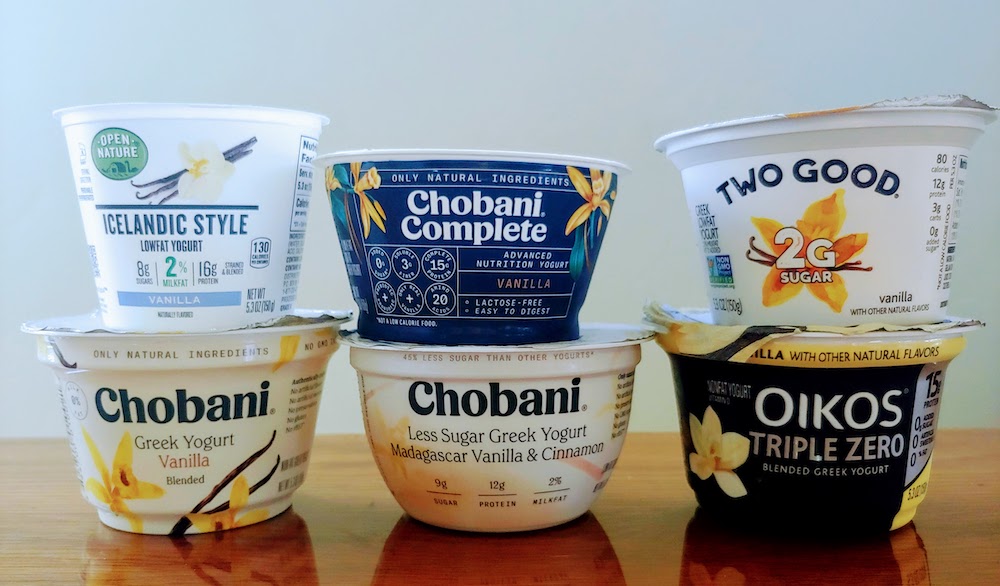
How I Tested The Yogurts
Below I give a brief introduction of each Greek yogurt I tested. Check out the “Nutrition Comparison” table at the bottom of the post for all the nutrition details.
For this analysis, I used only vanilla-flavored Greek yogurt that made a claim of “less sugar” or a low/no added sugar value. See the second “Evaluation and Comparison” table below for a more details – and opinions – on each yogurt.
Now, for the fun part. I created the flavor, texture, and visual evaluation (loosely) based on established parameters from dairy science. For sensory characteristics, we noted the smell, color, and aftertaste of each yogurt.
In addition, we ranked 6 taste and texture characteristics on a scale from 1 – 5, with 1 being not detected and 5 being the most extreme degree. For example, if I’m tasting for sweetness, a plain yogurt might have a value of 1 (not at all sweet), and chocolate chunk ice cream might have a value of 5.
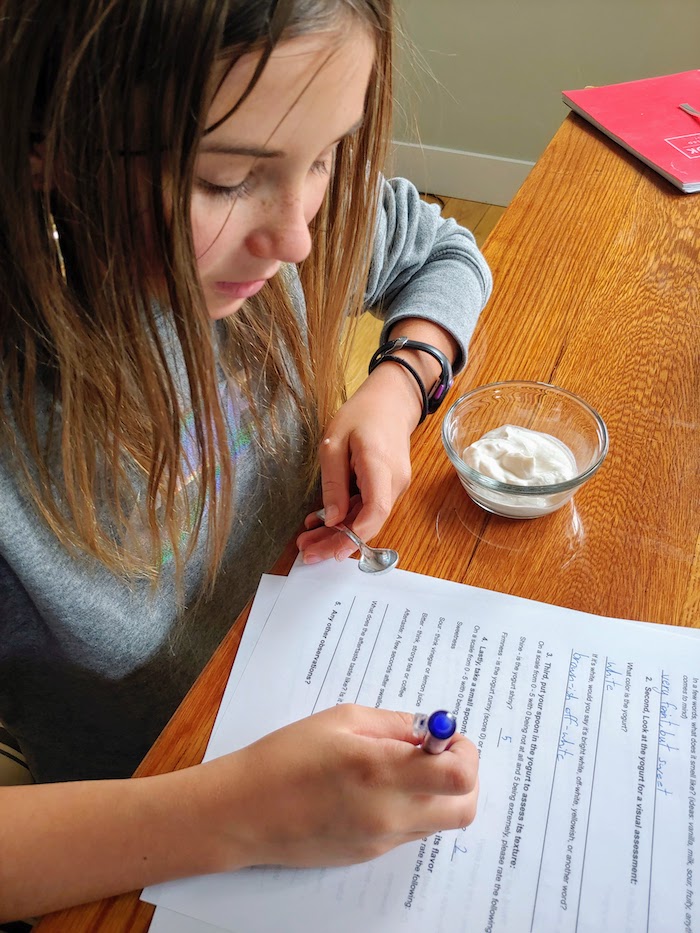
Less Sugar Greek Yogurts Tested:
Chobani Greek Yogurt – Vanilla flavored

This is the standard, or control yogurt. It’s just regular Greek vanilla yogurt from Chobani. 12 g protein, 12 g total sugar
Chobani Less Sugar Greek Yogurt – Madagascar Vanilla & Cinnamon
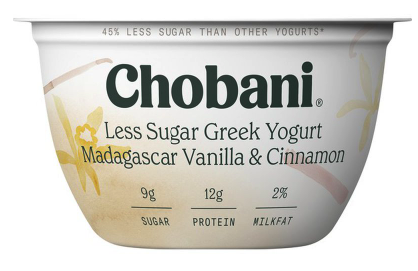
Why the fancy flavor description? I don’t know. What I do know is that a little cinnamon makes less sweet things taste sweeter. Smart, Chobani. 12 g protein, 9 g total sugar
Chobani Complete
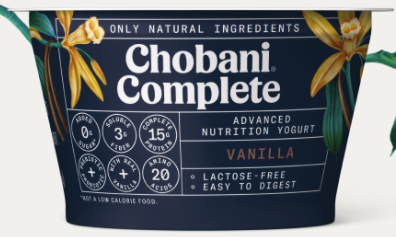
Chobani’s Complete line boasts higher protein, added fiber, and no added sugar (monk fruit and stevia-sweetened). But wait, there’s more! It is also lactose-free, meaning that lactase (the enzyme that breaks down lactose) is added. 15 g protein, 6 g total sugar
Open Nature (Safeway store brand) Icelandic Style

It’s not actually Greek, it’s Icelandic. Because we all needed yet another variety of yogurt, right? Wherever it comes from, it has the highest protein content of any yogurts tested (per 5.3-oz cup) and still has less added sugar than Chobani’s “less sugar” yogurt, so we tried it. 16 g protein, 8 g total sugar
Two Good Greek Yogurt by Dannon
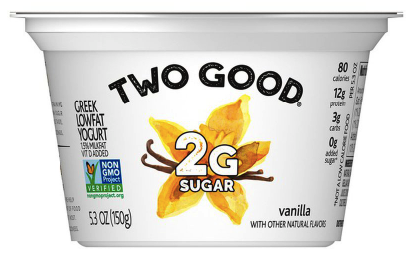
The lowest-calorie option of the bunch, Two Good is aimed squarely at the low-carb crowd. At only 3 grams of carbs (not sugar, total carbs), you better believe this one is sweetened with stevia. 12 g protein, 2 g total sugar
Oikos Triple Zero Blended Greek Yogurt
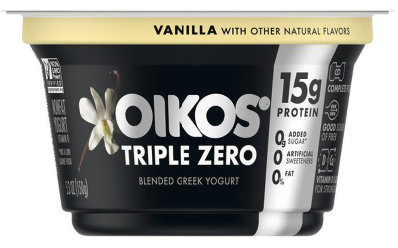
This is the Vin Deisel of the yogurt world (you know, because he’s XXX). The three zeros are for: 0 g added sugar, 0% fat, and 0 artificial sweeteners. It’s sweetened with Stevia. 15 g protein, 5 g total sugar
Results
The table below shows a comparison of all the nutrition information, plus the sweeteners used, in each yogurt:
Nutrition Comparison Among "Less Sugar" Greek Yogurts
| Chobani Greek Yogurt | Chobani Less Sugar Greek Yogurt | Chobani Complete | Open Nature (Safeway store brand) Icelandic Style | Two Good Greek Yogurt by Dannon | Oikos Triple Zero Blended Greek Yogurt | |
|---|---|---|---|---|---|---|
| Calories | 110 | 120 | 120 | 130 | 80 | 100 |
| Fat (g) | 0 | 2.5 | 2.5 | 3 | 2 | 0 |
| Carbs (g) | 15 | 11 | 10 | 10 | 3 | 10 |
| Total Sugar (g) | 12 | 9 | 6 | 8 | 2 | 5 |
| Added sugar (g) | 9 | 5 | 0 | 4 | 0 | 0 |
| Protein (g) | 12 | 12 | 15 | 16 | 12 | 15 |
| Calcium (% DV) | 10 | 10 | 10 | 10 | 6 | 10 |
| Sweetener(s) | cane sugar | cane sugar | monk fruit extract, stevia leaf extract | sugar | stevia leaf | stevia leaf |
The Best Tasting Less Sugar Greek Yogurt is …
WINNER: Chobani’s Less Sugar Greek Yogurt
All three of our panelists (again, that’s me, my 13-year-old son, and 11-year old daughter) liked the flavor and even the aftertaste.
Here’s a breakdown of our test results:
Evaluation and Comparison of Less Sugar and Regular Greek Yogurts
| Chobani Greek Yogurt | Chobani Less Sugar Greek Yogurt | Chobani Complete | Open Nature (Safeway store brand) Icelandic Style | Two Good Greek Yogurt by Dannon | Oikos Triple Zero Blended Greek Yogurt | |
|---|---|---|---|---|---|---|
| Aroma | light vanilla, sour, nothing | slight vanilla, some spice, faint and sweet | vanilla, cookie batter, dairy, strong vanilla | faint vanilla, vanilla, fruity, milkfat | faint vanilla, cream | sour, lemony, cheesy |
| Color | off-white, no flecks, white | brownish off-white, off-white with very faint tan/brown flecks (of vanilla?) | cream-color, no flecks, yellowish, off-white | very white with small flecks of brown black; off-white | creamy white | snow white |
| Shine (0 - 5 scale) | 4.50 | 4.17 | 3.17 | 4.00 | 3.67 | 3.67 |
| Thickness/creaminess (0 - 5 scale) | 1.67 | 2.67 | 4.00 | 3.67 | 4.00 | 4.00 |
| Sweetness (0 - 5 scale) | 4.00 | 3.50 | 3.67 | 2.00 | 2.00 | 3.00 |
| Sour (0 - 5 scale) | 2.00 | 1.50 | 1.50 | 3.50 | 2.33 | 2.00 |
| Bitter (0 - 5 scale) | 1.67 | 1.67 | 1.50 | 3.33 | 2.33 | 2.00 |
| Aftertaste | dry, puckering aftertaste, slight aftertaste | light, cinnamon | lemony, acidic, slightly dry and puckering; light; "barf" | medium strength aftertaste; it leaves a strong "bad breath" flavor; tart, dry, puckering | chalky, sour | light, lemon custard, slightly cheesy |
| Other notes | "It's pretty runny and not very creamy" | "Best flavor so far - sweet, warm vanilla and cinnamon" | "I really like it", "It looks lumpy" | "Very creamy, consistent texture" | "It's OK" | "there's some liquid pooling around the edges of the bowl" |

Surprises:
- How AWEFUL the aftertaste was for every yogurt, except the winner. Bleh! Descriptions like “Barf!” and “Bad breath taste” come to mind.
- Textures are all over the map. Some yogurts were decadently thick and held the spoon up like a flagpole, while others were thin like salad dressing.
- How mediocre most of the vanilla yogurts tasted. True, we focused on the lower sugar varieties that had other health claims/flavor killers going for them, but still … except for the winner, Chobani Less Sugar, I’d rather eat plain yogurt.
What Does This Mean in Practice?
Lots, depending on your habits & goals. For example …
How often or much yogurt do you eat? I don’t buy individual yogurt cups for myself. Instead, I buy 32-, 48-, or 64-oz containers. Why? I eat so much yogurt that it’s a waste to buy individual 5-ounce containers – so much trash!!
Do you value convenience or control? If convenience is your jam, you might like flavored yogurt in serving-size cups. For me (control freak), I eat plain (unsweetened) yogurt – either Greek or regular. If I want sweet yogurt (which I do), I add fruit, cinnamon, and a whole host of other random ingredients. Want examples? See my breakfast bowl and pumpkin bowl posts.
For my family, who I want to be healthy and happy – we compromise. The kids care mostly about the label graphics and will eat any whizbang-packaged yogurt-type food you put in front of them. However, my husband wants something creamy and filling (some fat and protein). The answer is Oregon’s own Tillamook Farmstyle Greek Yogurt. Yes, there is added sugar, and that’s OK. The yogurt is just fabulously creamy and tasty, contains a lot of protein, has recognizable ingredients, and it’s somewhat locally made.
There you have it: I eat plain yogurt from the biggest trough/tub I can find and modify it to my nutritionist heart’s content.
Takeaway: For the family, we buy yogurt that’s a win-win – tasty, healthy, and convenient – Tillamook Farmstyle Greek.
Buy and eat yogurt that’s a win-win – tasty and healthy
Methods: For Information Only – Possibly Very Boring
Taste Testing: Flavor, Texture, Appearance
Flavor
For the taste test (ie, flavor), I observed smell/aroma, aftertaste, texture, flavor, and visual appearance.
Aroma – What’s that smell? I sought out the following aroma characteristics, and made a note of anything surprising or distinct, such as:
- “cooked milk”
- “dairy sour”
- “milk”
- “fruity” or “vanilla”
Flavor characteristics:
- Sweetness scale
- Sour
- Bitter
- Aftertaste: Is there a lingering flavor (vanilla)? Is the aftertaste acidic or is there a drying/puckering mouthfeel?
I also asked my kids to do these assessments, but they have a more “shoot from the hip” assessment style. For that reason, I’m listing their comments for your enjoyment.
Texture and Visual
I (literally) looked at:
- color
- surface shine
- firmness
References
21 CFR 101.60 Nutrient content claims for the calorie content of foods. Revised as of April 1, 2020. Current as of January 8, 2021. https://ecfr.federalregister.gov/current/title-21/chapter-I/subchapter-B/part-101/subpart-D/section-101.60
Bi, Kexin, et al. “A Deep Learning Method for Yogurt Preferences Prediction Using Sensory Attributes.” Processes, vol. 8, no. 5, 2020, p. 518., doi:10.3390/pr8050518.
Desai, N.t., et al. “Sensory Properties and Drivers of Liking for Greek Yogurts.” Journal of Dairy Science, vol. 96, no. 12, 2013, pp. 7454–7466., doi:10.3168/jds.2013-6973.



